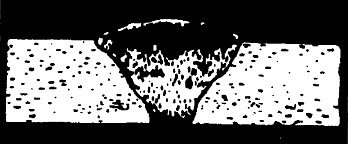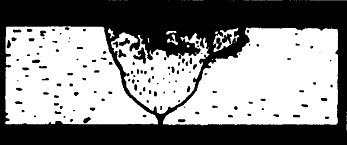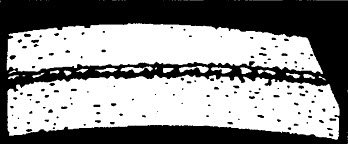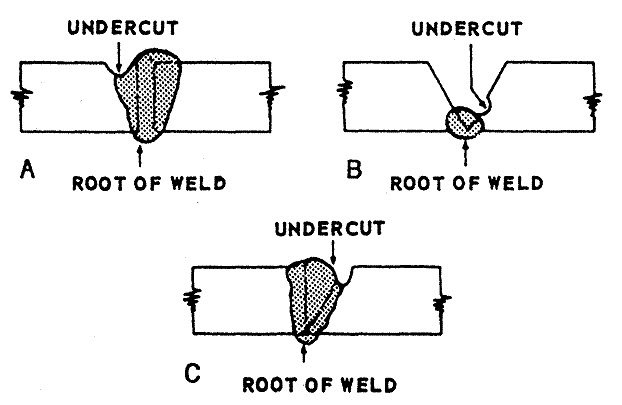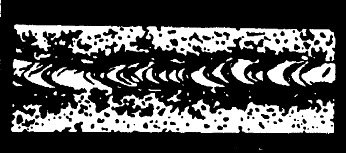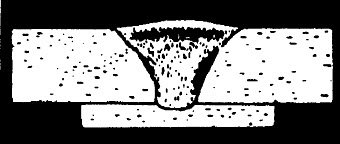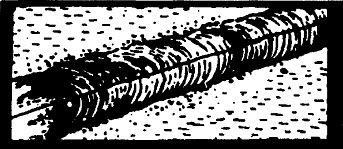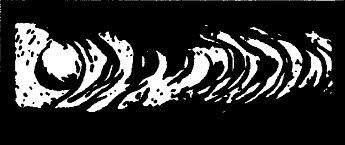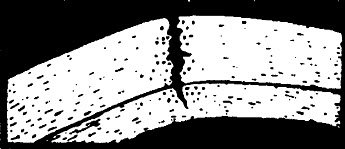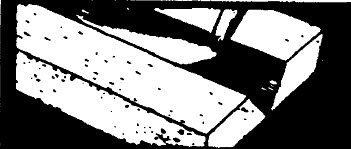10 Welding Problems and How To Fix Them!
You'll experience many welding problems as you get more into metal fabrication.
You'll experience anything from porous welds and cracks, to ugly welds and magnetic blow.
I've done my best to present the most common problems and solutions for you.
I think you'll find that the description of the problem and solution is easy to follow, and hopefully helpful!
The only thing is that the pictures are not the greatest. Over time I will get better ones. But they get the job done.
My Welds Are Porous!
Why They're Porous:
- Short arc with exception low hydrogen and stainless
- Insufficient puddling time
- Impaired base metal
- Poor electrode
- Improper shield coverage
What To Do:
- Check impurities in base metal
- Allow sufficient puddling time for gases to escape
- Use proper current
- Weave your wield to eliminate pin holes
- Use proper electrode for job
- Hold longer arc
- Check shield gas
Poor Penetration!
Why Penetration Is Bad:
- Speed too fast
- Electrodes too large
- Current too low
- Faulty preparation
What To Do:
- Use enough current to obtain desired penetration – weld slowly
- Select electrode according to welding groove size
- Leave proper gap at bottom of weld
My Metal Is Warping!
Why It's Warping:
- Shrinkage of weld metal
- Faulty clamping of parts
- Faulty Preparation
- Overheating at joint
What To Do:
- Peen joint edges before welding
- Weld more rapidly
- Avoid excessive space between parts
- Perform parts before welding
- Use proper sequence
- Clamp or tack parts properly – back-up to cool
- Adopt a proper welding procedure
- Use a high speed, moderate penetration process
Weld Is Undercutting!
Why It's Undercutting:
- Faulty electrode or gun manipulation
- Faulty electrode usage
- Current too high
What To Do:
- Use a uniform weave in butt welding
- Avoid using an overly large electrode
- Avoid excessive weaving
- Use moderate current weld slowly
- Hold electrode at safe distance from vertical plane in making horizontal fillet weld
Too Much Spatter!
Why There's Spatter:
- Arc blow
- Current too high
- Arc too long
- Faulty electrodes
What To Do:
- Clean parts in weld area
- Adjust current properly
- Adjust voltage
- Pick suitable electrode
I Want Better Fusion Of My Weld!
Why There's Poor Fusion:
- Wrong speed
- Current improperly adjusted
- Faulty preparation
- Improper electrode size
What To Do:
- Adjust electrode to match joint
- Weave must be sufficient to melt sides of joint
- Select proper current and voltage
- Keep weld metal from flowing away from plates
Cracked Welds!
Why There's Cracks:
- Wrong electrode
- Weld and parts sizes unbalanced
- Faulty welds
- Faulty Preparation
- Rigid Joint
What To Do:
- Design structure to eliminate rigid joints
- Heat parts before welding
- Avoid welds in string beads
- Keep ends free to move as long as possible
- Make sound welds of good fusion
- Adjust weld size to parts size
- Allow joints a proper and uniform gap
- Work with amperage as low as possible
My Weld Is Ugly!
Why It's Ugly:
- Faulty electrode
- Overhang
- Improper use of electrode
- Wrong arc voltage and current
What To Do:
- Use a proper welding technique
- Avoid overheating
- Use a uniform weave
- Avoid overly high current
Brittle Welds?
Why They're Brittle:
- Wrong electrode
- Faulty preheating
- Metal hardened by air
What To Do:
- Preheat at 300° to 500° F. If welding on medium carbon steel or certain alloy steels
- Make multiple layer welds
- Stress relieving after welding
- Use low hydrogen processes for increased weld ductility
Magnetic Blow!
Why The Arc Wanders:
- Magnetic fields cause the arc to deviate from its intended course
What To Do:
- Use steel blocks to alter magnetic path around arc
- Divide the ground into parts
- Weld in same direction the arc blows
- Use a short arc length
- Locate the ground properly on the work
- Use AC welding
Top Rated Videos:
Top Tools and Resources:
Welding Plans:
New! Welding Table
New! Log Splitter
Top Projects:
